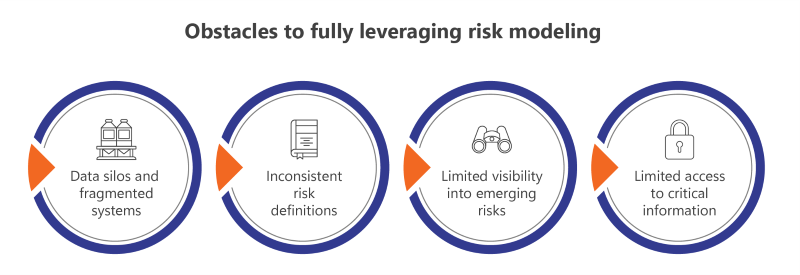This article is based on insights from our white paper Unified risk modeling for utility resilience. Click here to download the paper and learn more about how to overcome the most common struggles with effective risk management.
Utilities face rising pressure to manage grid risk proactively, especially as climate-driven events, aging infrastructure, and electrification challenges grow more complex. While many organizations have invested in risk modeling, most still fall short of building a truly effective strategy.
Fragmented systems, inconsistent definitions, and siloed data remain some of the biggest barriers to delivering reliable, data-driven decisions. Without a unified approach, utilities are forced to react to threats instead of preparing to minimize their impact.
This article—the first in a four-part series exploring unified risk modeling—unpacks the most common risk management challenges facing today’s utilities and sets the foundation for exploring smarter, more scalable solutions in future installments.
Article continues below.

Obstacles to realizing the full value of risk modeling
Many utilities invest in risk modeling but fail to realize its full potential. Organizational and operational challenges stand in the way of building comprehensive, effective models.
Data silos and fragmented systems
Utilities often manage data separately across regional infrastructures and internal business groups. Without integration, critical risk factors can go unnoticed, leaving high-risk areas vulnerable to disruption.
Inconsistent risk definitions
Different teams may calculate risk scores differently, making it difficult to compare trends, benchmark performance, and align mitigation strategies across the organization.
Limited visibility into emerging risks
Fragmented data and outdated modeling techniques prevent utilities from identifying subtle risk patterns—such as changes in vegetation growth or infrastructure stress driven by climate trends—that could inform preventive action.
Limited access to critical information
When decision makers lack access to clean, accurate, and timely data, effective models cannot be developed to support well-informed, proactive decisions.

Why it matters: The wildfire example
Utilities across the United States are investing heavily in wildfire mitigation, but fragmented risk models often prevent those efforts from delivering results.
Some organizations still rely on static vegetation management schedules that overlook dynamic, high-risk areas. Others struggle to incorporate critical external indicators like wind speed, drought conditions, and historical ignition patterns. The result: inefficient resource allocation and higher exposure to costly disruptions.
By contrast, utilities in high-risk areas are seeing measurable improvements with unified risk modeling. One provider integrates vegetation management, real-time weather inputs, and asset health metrics into a single model, enabling smarter mitigation and reducing wildfire-related outages. Another utility uses predictive analytics to optimize tree inspections based on species growth rates and historical outage data, streamlining labor and improving seasonal readiness.
What’s next in the series
Solving these challenges starts with a clear, scalable framework for modeling risk. In our next article, we’ll explore the case for unified risk modeling—why utilities need it now, and how it transforms resilience planning from reactive to proactive.

